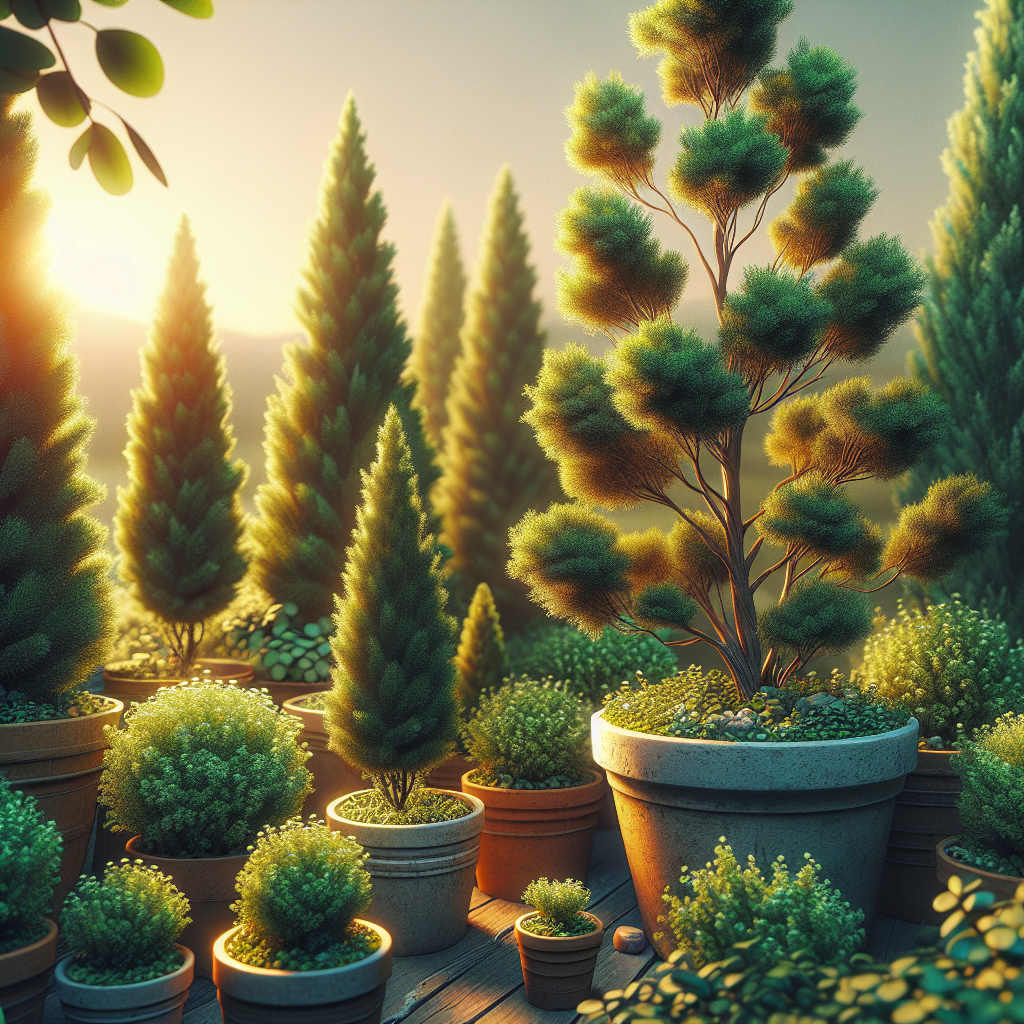Cultivating Juniper in Pots for Vibrant Landscapes
Juniper trees are a popular choice for landscaping due to their vibrant foliage, low maintenance requirements, and versatility. While they are often planted directly into the ground, cultivating juniper in pots can offer unique advantages for creating vibrant landscapes. Whether you have limited space, want to create a portable garden, or simply prefer the aesthetics of potted plants, this article will guide you through the steps of successfully growing juniper in pots.
1. Selecting the Right Juniper Variety:
Before starting your potted juniper adventure, it’s essential to choose the right variety for your landscape and climate. Some popular juniper varieties suitable for container gardening include Japanese Garden Junipers (Juniperus procumbens), Blue Star Junipers (Juniperus squamata ‘Blue Star’), and Old Gold Junipers (Juniperus x pfitzeriana ‘Old Gold’). Research different types of junipers to find one that fits your desired look and growing conditions.
2. Choosing the Right Pot:
Selecting the appropriate pot is crucial for successful growth of your juniper. Ensure that your chosen pot has drainage holes to prevent waterlogging, as stagnant water can lead to root rot. Plastic or terracotta pots work well because they retain moisture while allowing excess water to escape. Additionally, consider the size of your chosen variety when selecting a pot; a deep pot with a width at least double the plant’s root ball is generally recommended.
3. Soil Composition:
Junipers thrive in well-draining soil that replicates their natural habitat. A mixture of equal parts peat moss or coir fiber, sand or perlite, and high-quality potting soil provides ideal conditions for healthy growth. This composition allows for proper drainage while retaining enough moisture to sustain the plant.
4. Planting Techniques:
When planting junipers in pots, ensure that you have adequately prepared the pot and soil. Remove any weeds or debris from the pot and fill it with the soil mixture, leaving enough space to accommodate the root ball. Carefully remove the juniper from its nursery container, taking care not to damage the roots. Place it in the prepared pot, ensuring that it is centered and at an appropriate depth. Gently fill in any remaining space with soil mixture and lightly tamp down. Water thoroughly after planting to settle the soil around the roots.
5. Watering and Fertilizing:
Proper watering is crucial for maintaining healthy junipers in pots. The frequency of watering will depend on various factors such as climate, pot size, and drainage. Check the moisture level of your potting mix by inserting your finger about an inch into the soil; if it feels dry, it’s time to water. Ensure thorough watering so that moisture reaches all parts of the root system.
Fertilizing potted junipers is essential for promoting growth and vibrancy. Use a slow-release granular fertilizer formulated specifically for evergreen plants, following package instructions for application rates. Apply fertilizer during spring or early summer, making sure not to over-fertilize as this can lead to salt build-up in the soil.
6. Pruning and Shaping:
Junipers are amenable to pruning and shaping, making them excellent candidates for potted landscapes. Regular pruning helps maintain their desired form while promoting lush growth. Begin shaping your juniper by removing any dead or diseased branches using sharp pruning shears. As your plant grows, selectively prune branches to promote a balanced shape.
7. Winter Protection:
In regions with harsh winters, protecting potted junipers from freezing temperatures is crucial for their survival. Move your pots indoors or into a sheltered area like a garage or porch during winter months when temperatures drop below their cold hardiness zone.
8. Troubleshooting Common Issues:
While junipers are relatively low-maintenance, they can still face certain issues. Overwatering can lead to root rot, while underwatering may cause the plant to dry out and lose vitality. Monitor your plants regularly and adjust watering accordingly. Additionally, junipers can be susceptible to spider mites and aphids, so keep an eye out for any signs of infestation and take appropriate measures.
Cultivating juniper in pots provides an excellent opportunity to create vibrant landscapes, even in limited spaces. With proper selection, planting techniques, and care, your potted junipers can thrive and bring beauty to any corner of your outdoor living space. Enjoy the versatility and portability that potted junipers offer as you cultivate a vibrant landscape that will enhance the ambiance of your surroundings throughout the year.














